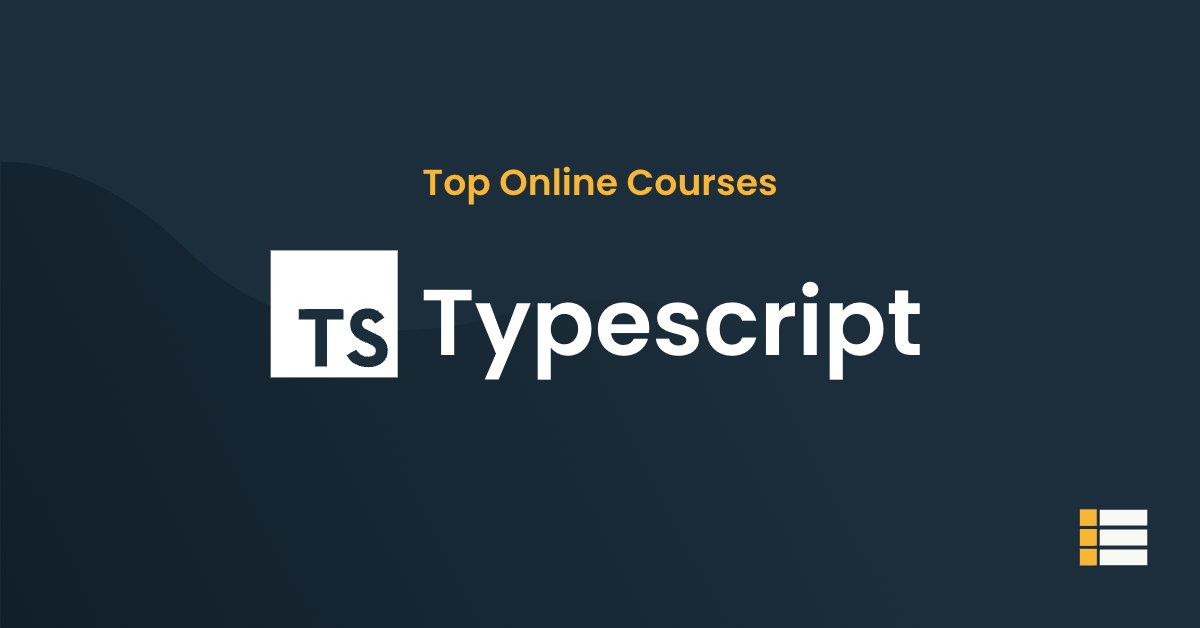Are you a web developer looking to expand your skillset?
Node.js is a powerful tool for creating server-side applications. Still, there are several other essential concepts and technologies that you should learn to take your programming to the next level.
In this blog post, we’ll cover eight other things you should learn after Node.js to become a well-rounded web developer.
Table of Contents
React.js: To create user interfaces for web applications using components, state, and props.
React.js is an open-source JavaScript library for building user interfaces that is popular among web developers and in high demand.
It is used to create interactive, stateful, and reusable UI components and can be used in combination with other JavaScript libraries or frameworks such as Angular.js or Node.js.

Learning React.js after Node.js can be beneficial for a developer as it can help them build robust and high-performing applications.
React.js is a great way to create dynamic, responsive user interfaces with minimal coding effort.
When using React, developers can create components that can be reused in multiple places throughout the application. This helps to make code more organized and efficient.
Developers can also take advantage of React’s virtual DOM, which makes it easy to keep track of changes to the state of the application.
React.js also offers a powerful yet simple programming model that makes it easy for developers to get started with creating UIs.
Developers can use the React components to build dynamic and interactive applications quickly.
Finally, React.js provides powerful debugging tools and an extensive library of pre-built components to help developers prototype and build their applications quickly.
MongoDB: To store and interact with data in a NoSQL database.
MongoDB is a powerful, open-source, document-oriented NoSQL database.
It is a popular choice for Node.js developers because it pairs nicely with the language.

Learning MongoDB after learning Node.js can be beneficial for several reasons. First, MongoDB is a NoSQL database storing data in a non-relational format.
This allows for better scalability and flexibility when dealing large amounts of data. MongoDB also allows for faster development cycles because the database can be modified without writing any SQL queries.
In addition, MongoDB is highly extensible and can store various data types, such as JSON and BSON documents.
By using MongoDB, developers can create complex applications more easily and quickly.
This is especially useful for Node.js applications, as they need to be able to store data quickly and efficiently. Another great benefit of learning MongoDB after Node.js is that MongoDB has a powerful set of features and tools for working with data.
It includes powerful query language, indexing, and aggregation capabilities. This makes it easier to perform complex data analysis and create powerful applications with geospatial indexing and text search features.
Finally, MongoDB has excellent scalability and performance. It is designed to scale easily and can handle large amounts of data without any issues.
This makes it ideal for Node.js applications requiring high scalability and performance levels. In summary, learning MongoDB after Node.js can be a great way to enhance your development skills.
TypeScript: To add type-safety to JavaScript code and improve maintainability.
Typescript is a strongly typed superset of JavaScript that compiles to plain JavaScript.
It is growing in popularity because it offers a number of features that make it easier to maintain large projects and scale applications.

After learning Node.js, one should learn Typescript for the following reasons:
- Strong Typing: Typescript allows you to use strong typing, which is a great way to catch errors early and ensure your code is robust. It also makes it easier to read and understand your code.
- Better Code Organization: Typescript enables you to better organize your code with namespaces and modules. This makes it easier to maintain large projects and scale applications.
- ES6 & Beyond: Typescript supports the latest version of JavaScript (ES6) and beyond, so you can use the latest language features without worrying about browser compatibility.
- Better Tooling: Typescript comes with a number of tools that make development easier, such as type checking, code refactoring, and debugging.
- Backward Compatibility: Typescript can also target older versions of JavaScript, so you can use the same codebase for both old and new browsers.
Express.js: To create fast and secure web applications using routes and middleware.
Express.js is an open-source web application framework for Node.js, and is the de facto standard for building fast, scalable web applications.
Learning Express.js after Node.js provides a number of benefits, including:
- Improved Efficiency: Using Express.js, developers can quickly create and deploy web applications. Express.js is built on top of Node.js, so it can quickly and easily reuse existing Node.js code. This helps developers to create applications faster and with fewer resources.
- Robust Routing: Express.js provides a robust routing system that makes it easy to create complex web applications. This makes it easier for developers to create various user interfaces and web pages.
- Separation of Concerns: Express.js offers a separation of concerns, allowing developers to create a single web application that contains both the front-end and back-end logic. This helps to keep the codebase organized and makes it easier to maintain.
- Middleware: Express.js provides a middleware framework that makes adding functionality to a web application easy. This helps developers quickly add features and functionality to an application without having to write additional code.
- Security: Express.js provides built-in security features that help to protect web applications from malicious attacks. These features help to ensure that data is handled securely and that applications are not vulnerable to attack.
Learning Express.js after Node.js is an important step in the development process.
It provides developers with an efficient way to create web applications, robust routing, separation of concerns, and built-in security features. All of these elements are essential for creating scalable, secure, and reliable web applications.
ES6 JavaScript: To write modern and efficient code with the latest syntax.
Node.js developers should learn ES6 JavaScript for a number of reasons. ES6, also referred to as ES2015, is the latest version of the JavaScript language, and it offers a number of improvements and features over the previous versions.
ES6 includes several new features that make it easier to write and maintain code, including:
- Improved Syntax: ES6 introduces some new syntax features that make writing code easier and more efficient. This includes arrow functions, template literals, enhanced object literals, and classes.
- Modules: ES6 also introduces built-in modules that allow developers to split their code into separate files, making it easier to maintain and organize code.
- Promises: Promises are a way of dealing with asynchronous operations in JavaScript, and ES6 implements them natively. This makes it easier for developers to write asynchronous code without resorting to complex callbacks or other techniques.
- Improved Performance: ES6 offers improved performance over older versions of JavaScript. This is because the code is more optimized for modern browsers, and it also eliminates some of the overhead associated with older versions of the language.
Overall, ES6 is a powerful and modern version of JavaScript that offers a number of advantages over the previous versions.
Node.js developers should learn ES6 to take advantage of its improved syntax and features and its improved performance.
NPM: To install and manage project dependencies and packages.
NPM, or the Node Package Manager, is an essential tool for Node.js developers. NPM provides a large registry of open-source packages that are available for developers to download and use in their applications.
This can save time and resources, as developers don’t need to develop the same functionality from scratch but can instead use existing code.
NPM also helps keep code clean and organized. By downloading and installing packages through NPM, developers can easily manage their code and ensure they are using the same version of each package across all of their Node.js applications.
This helps prevent versioning issues and makes it easier to track what code is used where. NPM also provides a wide range of tools and features to help developers.
For example, NPM Scripts can automate tasks, such as running tests, building applications, and linting JavaScript code.
NPM also provides access to a wide range of command-line tools, such as npx, which can install and run packages quickly. Overall, NPM is an invaluable tool for Node.js developers.
It helps simplify the development process by providing a vast library of packages and a wide range of tools and features to help automate tasks.
By learning and using NPM, Node.js developers can save time and resources and create more organized and cleaner code.
Testing Frameworks: To ensure code quality and reliability with automated tests.
When learning Node.js, it is important also to learn testing frameworks to ensure that applications are functioning correctly.
The most popular testing frameworks for Node.js are Mocha, Jest, SuperTest, and Ava.
- Mocha is a JavaScript testing framework that runs on Node.js and in the browser. It is designed to be flexible and extensible and can easily be integrated with other frameworks and libraries.
- Jest is a JavaScript testing framework built by Facebook. It is a zero-configuration testing platform that can test any JavaScript code.
- SuperTest is an HTTP testing library for Node.js. It provides an easy-to-use API for testing HTTP requests. Ava is a minimalist testing framework for Node.js.
It is designed to be fast and easy to use and can be used to test both synchronous and asynchronous code.
These testing frameworks are essential for developing reliable and robust Node.js applications.
Testing frameworks help developers ensure that their applications are functioning correctly and help them identify and fix any errors or bugs quickly.
GraphQL: To query and modify data from a server using a single graph-based endpoint.
GraphQL is an alternative to REST-based APIs and is becoming increasingly popular due to its ability to reduce the amount of data transferred between the client and server.
With GraphQL, developers can specify exactly the data they need, reducing the overhead associated with making multiple API calls to different endpoints.
This makes GraphQL particularly useful for mobile applications, which often have limited data transfer capabilities.
By learning GraphQL, Node.js developers can create more efficient and performant applications.
Conclusion
In conclusion, Node.js is a powerful and versatile open-source platform for developing web applications.
While learning Node.js is essential, it is not sufficient to become a full-stack developer.
With the right combination of technologies, developers can open up a world of possibilities and craft robust web applications.




